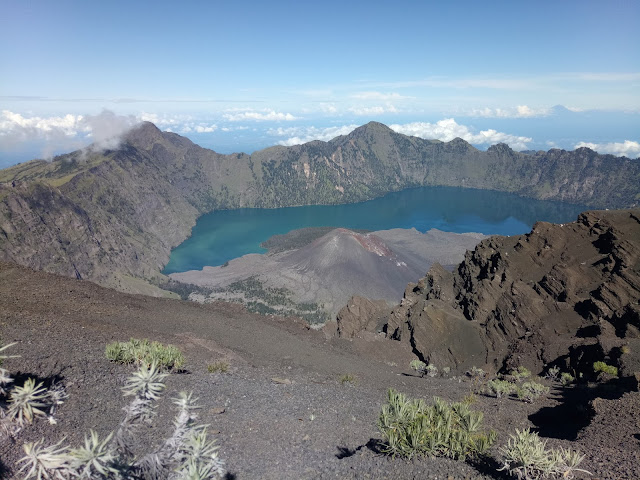A Walk to The Past
A special posting for my English Academic Class in Library and Information Science :)
Remember the history lesson in
elementary school? I felt like brought back to the school grade a few days ago,
of course with saw directly the objects called in the history book. It happened
in Museum Nasional, which also known as the museum ‘Gedung Gajah’, one of many
museums in Jakarta City. Its location in Jalan Medan Merdeka Barat no. 12,
Centre Jakarta.
Museum Nasional must be visited,
besides this location is nearby with other recreation center like Monas,
Istiqlal Mosque, etc., cheap entry ticket (only Rp 5000 for adult), and also because
of the superb collections. For example, the oldest Yupa inscription from Kutai
Kingdom, kitchen rubbish (kjokenmoddinger)
from megaliticum era, or the wine glass property of VOC, that all be presented in
Museum Nasional and (the most important) original!
Well, before I continue my story, here is the following history about the
founded of Museum Nasional. I got this information from the brocure when I
visited.
The exixtence of the Museum Nasional
began with the establishment of Bataviaach Genootschap voor Kunsten en
Weternschappen, which founded by the Dutch Government on 24 April 1778. During
at the time, revolution of enlightenment happened in Europe when the people
developed the knowledge and science. In 1752, founded De Hollandsche
Maatschappij der Wetenschappen (Dutch Scientific Society) in Haarlem, Dutch.
This society planned to open a branch in Batavia (now Jakarta), and was
received well there by the people with the same scientific orientation.
On 24 April 1778, a private institution
was founded, it named Bataaviasch Genootschap van Kunsten en Wetenschappen
(BG). Their motto was “Ten Nutte van het Algemeen” (for the benefit of all). One
of the founder, JCM Radermacher, donated his house in Jalan Kalibesar, a trade
distric in Jakarta-Kota. He also donated some usefull collections of culture
stuff, artefacts, and books which became the initial collection of the museum
and library.
During the England administration in
Java (1811-1816), Governor Sir Thomas Stanford Raffles became the Director of
BG. Due to the growth of the collections, the house in Kalibesar couldn’t
accommodate all the object anymore. Therefore, Sir Thomas Stanford Raffles
ordered to established a new building as museum and meeting hall for the
Literary Society (previously called ‘Society de Harmonie’). This build located
on Jalan Majapahit no. 3. Presently, this is the location of Govermental
Secretariat (Gedung Sekretariat Negara), nearby the Presidential Palace (Istana
Negara). In a word, this new build became too small for the BGs’ collections
which steadily grew. Finally, in 1862 Dutch Government decided to build a new
museum, and we know as Museum Nasional in Jalan Medan Merdeka Barat no.12.
I visited Museum Nasional on 24 October
2013 at 13.00 pm. It can reach by Commuter Line from Universitas Indonesia
station and stop at the Juanda Station, then take a Bajaj to Museum Nasional location. Firstly
we greeted by the bronze elephant statue in front of museum. For your
information, this staue was a gift from King Chulalongkorn (Rama V) of
Thailand, who visited the museum in 1871.
Museum nasional has two building. Old
building (Gedung A) used to collection exhibition and storage room, and new
building (Gedung Arca/ Gedung B) right besides old building used for the
exhibition room (1st to 4th floor) and for the office,
conference, laboratory, library, etc. Almost all of the collections in Old
Building is original, while the collections in New Building are assortment both
original and otentic collections.
Unfortunately, when I visited the Museum
Nasional, the Old Building was closed. I didn’t consider the theft collection
case a few times ago was the cause of this closing. I tried to contact the
museum officer in 7th floor, hopefully could enter the Old Building,
but the officer said that the closing of Old Buliding held by the Police. So
that, he couldn’t helping more.
Eventually, I walked around the New
Building. It was not bad, the bulding was very nice, clean, and fresh. The
object here is arranged thematically, so the collection isn’t well-organized by
the times. The 1st floor is Replica of Prehistoric Times. It load
otentic replica collection of ancient human skull, such a complete Sangiran 17
skull (Homo Erectus tipical) and prehistorical burial in Gilimanuk accompanied
by favorite things.
The 2nd floor is Technology
& Economic Science, Literacy & Language. In this floor we will see the
otentic and original collection of inscription. The example of otentic
collection is Ciaruteun inscription and scale model of Javanese traditional
house. And the original collection such a Talang Tuo and Kota Kapur inscription
of Sriwijaya Kingdom, Yupa inscription, King Mulawarman inscription, Palapa
inscription of Majapahit Kingdom, the Old World Globe from Dutch colonial
period, traditional and classical weapon, the old bell from dutchman ship, even
the Far-Earth travel map belongs Cornelis de Houtman.
The 3rd floor is Social
Organization & Settlement Pattern. This floor load the household things,
like wardrobe, dining table, antique glasses, bronze nekara (kettledrum), moko
(small kettledrum), bracelets, Princess Banyuwangi crown, earrings, necklaces,
water klkl, plates, and Indonesia traditional
cloth (songket, batik, weaving
affairs Kalimantan).
Unfortunally, again, the 4th
floor was closed because some of repaired. In other side, the information
sticker beside the collection sometimes incomplete, eventually there’s nothing
information sticker. And the inter-face computer in the room collectin is turn
off, that really distinguise consider
the visitor need communicative information there. In general, Museum
Nasional gives a special experience by the strength of its’ collection, I
really feel like through the time trail.





Komentar
Posting Komentar